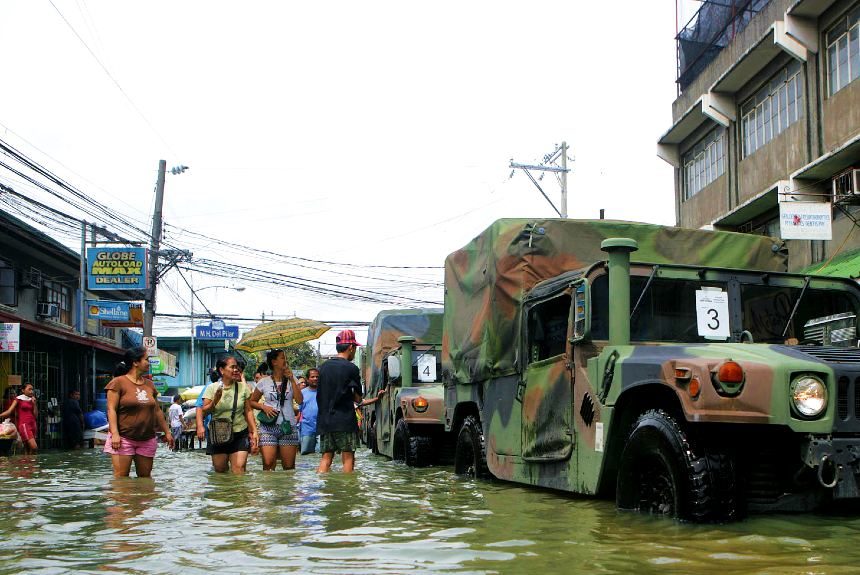Sta Rosa, Philippines, is frequently visited by heavy rains that cause flash floods and severe flooding in the area and nearby cities. The city sits on the edge of Laguna Lake, the largest lake in the Philippines, and is located just east of its capital city, Manila.
Professor Damasa Macandong of the University of the Philippines Institute of Biological Sciences says that climate change is causing stronger typhoons and rains to hit the Philippines. Heavy rains cause flashfloods and severe flooding, devastating property and public infrastructure and loss of life, especially those living in informal settlements along the riverbanks.
The video “Overcoming Floods in the Philippines: A Story of Climate Change Adaptation and Mitigation” presents how rapid urbanisation and industrialisation contributed to the flooding problem.
The video-documentary mentions that agricultural lands have been paved with impermeable materials to accommodate factories, commercial buildings, housing projects, and public infrastructures like roads.
Japan’s Institute for Global Environmental Strategies (IGES) partnered with the University of the Philippines (UP) Los Baños to help Sta Rosa and neighbouring towns adapt to increasing flooding threats.
The partnership between the two institutions has led to the Participatory Watershed Land Use Management Project.
Through this partnership, the teams combined their expertise to create flood hazard maps of the Sta Rosa watershed. The IGES brought their expertise in Geographic information system (GIS) and remote sensing techniques, and the University of the Philippines their proficiency in hydrological modelling.
According to Mr. Endo, these hazard maps will help cities understand future flooding threats.
These hazard maps were able to simulate the condition of the watershed in 2025. Simulations show that massive flooding will affect the four cities comprising the watershed.
This information allowed local officials to work together and develop an integrated approach to address flooding and implement adaptation strategies.
Prof. Macandong hopes that Santa Rosa’s integrated watershed management will become a model for other sub-watersheds in the country. Land-use management by local governments will allow for the sustainability and maintenance of the watershed’s ecology.
Know more about the climate adaptation and mitigation measures they have undertaken jointly by watching the video below:
Source Citation:
Overcoming Floods in the Philippines: A story of climate change adaptation and mitigation. (2016 April 7). IGESjapan. [Video file]. Retrieved from https://www.youtube.com/watch?v=An47ybg8xrA&feature=emb_logo
PHOTO CREDIT: By U.S. Marine Corps photo by Lance Cpl. Marie Matarlo – This Image was released by the United States Marine Corps with the ID 091004-M-9443M-134 (next).This tag does not indicate the copyright status of the attached work. A normal copyright tag is still required. See Commons:Licensing.العربية | বাংলা | Deutsch | English | español | euskara | فارسی | français | italiano | 日本語 | 한국어 | македонски | മലയാളം | Plattdüütsch | Nederlands | polski | پښتو | português | svenska | Türkçe | українська | 中文 | 中文(简体) | +/−, Public Domain, https://commons.wikimedia.org/w/index.php?curid=8370918



Leave a Reply